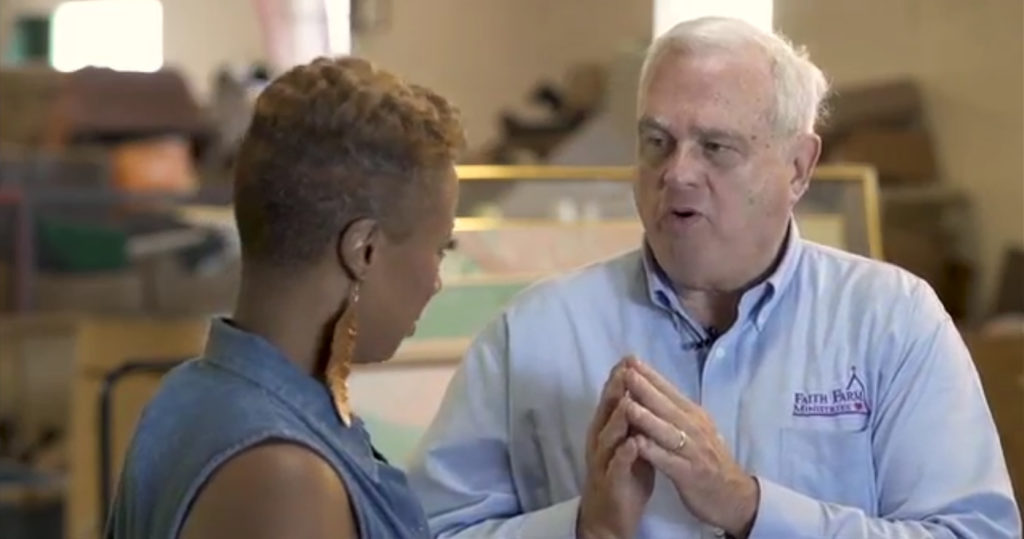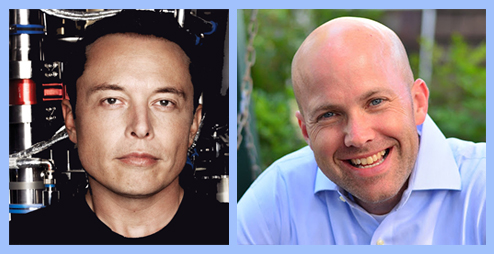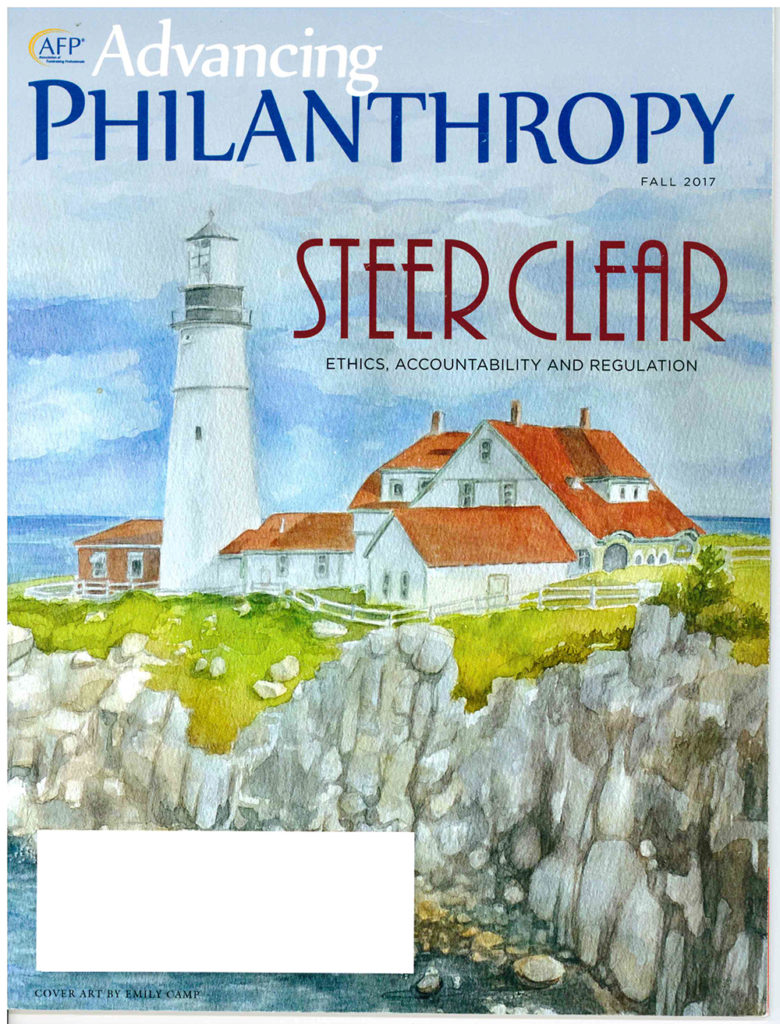3 Easy Ways to Cut Nonprofit Costs
March 17, 2018
Dean Webb & Faith Farm Ministries – Meet America’s Strong CEO!
March 18, 2018The NANOE Innovation: Is the Nonprofit Sector Anti-Free Market? – Louis Fawcett

For too long, Americans have used the term “nonprofit” in a way that means “against profit.” Let’s be clear: to operate as a nonprofit does not mean operating at a loss each year. Rather, nonprofits sow whatever gains they have back into their missions to change and save lives. There is nothing wrong with a nonprofit innovating and taking risks for the sake of achieving a heroic mission of scale. In the free market, ideas that have value will gain investors, while ideas that cannot compete will fail. The end result is better products and services for consumers.
Yet, so many in our industry insert anti-free market views into discussions about nonprofit growth. Organizations like Association of Fundraising Professionals (AFP) promote diversity but when faced with diversity of thought regarding nonprofit management, they persecute those who think differently. Indeed, AFP spends more time promoting rules and regulations than innovation and growth.

Instead of new ideas, AFP keeps serving up more rules, ethical codes and regulations.
When NANOE (National Association of Nonprofit Organizations & Executives) suggests innovation, strong leadership and bold fundraising as keys to growing nonprofits, the backlash is significant. Authorities start whisper campaigns using words like “unethical,” “startling,” “unorthodox,” and “undermining integrity” to scare people away from the discussion. Some in our industry have even resorted to calling NANOE’s business partners in attempts to discourage these businesses from collaborating with NANOE.
Rather than being threatened by the free market, what if we used innovation, appropriate risk and differentiation to increase our impact? What if we embraced new ways of thinking about the nonprofit sector as a way to spark growth? Why is it that we villainize capitalism when we rely on it for money to fund our missions? What if we learned from successful corporations and applied these lessons to our charitable work?
Take Tesla as an example. Elon Musk has made the electric car stylish, fast and exhilarating. He has innovated every step of the way, made bold choices as a leader, and taken appropriate risks. Tesla has differentiated itself from the competition and gained significant market share as a result.
The rise of Tesla as an innovative force in the free market is even more powerful when considered against the backdrop of the history of automotive manufacturing.* For nearly a century, gasoline powered cars were the only option for consumers. While auto makers dabbled with electric cars, they faced an essential problem: they could not aggressively market the benefits of electric cars without disrupting sales of their gasoline powered vehicles.
Enter Tesla. By providing unique electric automobiles sold in small show rooms in upscale shopping areas, Tesla gained market share without using the big car-lot dealership approach. Elon Musk eschewed the traditional franchised auto sales model in favor of direct sales to consumers. Predictably, auto dealers said “YOU CAN’T DO IT THAT WAY!”
Citing archaic laws about auto makers not engaging in direct sales, dealers are attempting to prevent Tesla from doing business. So threatened by Tesla’s innovation and barrier breaking approach, auto dealer associations are suing Tesla. While Tesla may face some difficulties in the short term, ultimately, Tesla’s sales model will succeed because of its innovation.
Innovation leading to growth has been the cornerstone of American prosperity. In the nonprofit sector, however, there has been little or no innovation and thus, little or no growth. Organizations such as the National Council of Nonprofits and the Association of Fundraising Professionals (AFP) are maintaining the unchallenged status quo. Using their version of the Model T (traditional board service, anti-free market ethical codes and feasibility studies), nonprofit industry authorities hoard power and information believing their version of operating nonprofits is the only option needed.
Enter National Association of Nonprofit Organizations & Executives (NANOE). NANOE is using innovation to disrupt the nonprofit sector. NANOE believes innovation is the key to heroic missions of scale that change lives deeply and broadly. NANOE sees free market principles as normative sound business practices. With bold clarity, NANOE promotes what nonprofit leaders have been thinking for years but have been afraid to say: Nonprofit practices should align with our lifestyles, not with outmoded standards.
Here are just a view of the NANOE innovations we are asking our peers to consider:
1. By serving donors first, mission impact will grow.
2. By spreading information widely, all nonprofits will have what they need to succeed.
3. By paying nonprofit executives salaries equivalent to the corporate sector, talent will be attracted.
4. By appointing boards of compensated experts, more lives will be changed.
5. By creating new nonprofit products and services, donors will have better options for their generosity.
6. By supplying credentials reflective of the current experiences, nonprofit leaders will be affirmed and elevated.
7. By providing evidence based research, new thinking and practices will emerge.
These new approaches are previewed in the trailer for “Broken for Good.” See below:
Predictably, nonprofit authorities stuck in the past are saying, “YOU CAN’T DO IT THAT WAY!” In the same way Henry Ford believed the Model T was the only car Americans needed, groups like AFP believe they are the only association nonprofits need. So threatened by NANOE’s innovation and barrier breaking approach, AFP is attempting to stifle our voice. But innovation cannot be silenced. Truth never fears a challenge.
By promoting free market principles in the nonprofit sector, NANOE is taking what works for businesses and applying it to human service, education, the arts and the environment. Strong CEOs working with small, expert boards supported by well paid employees who share new ideas and practices. NANOE’s values emanate from shared experiences rather than rules passed down from ivory tower elitists. These are the engines that propel NANOE and will drive the nonprofit sector to growth.
We are thankful for those who have gone before us, but it is time to offer a nonprofit experience that is fast, exhilarating, stylish and rewarding.
Why putter along in a Model T when you can drive a Tesla?
–END–
*Regarding U.S. Automotive History: To say “Henry Ford changed the world” is an understatement. More than any person in modern times, Henry Ford transformed the landscape of economics, commerce and families. He changed the average radius of a person’s life from several miles to hundreds of miles. Ford’s assembly line allowed an expensive luxury item to become an affordable part of every American family. While the assembly line was innovative in terms of manufacturing, Ford refused to innovate in terms of the customer. He believed the Model T was sufficient for a family’s needs and choice should not be available. “Any customer can have a car painted any color he wants, so long as it is black,” he said. Ford believed the Model T was the only car needed by Americans. Entrepreneurial auto makers like General Motors and Dodge believed differently. The Dodge brothers built cars with more power, durability and safety than the Model T. General Motors introduced choices of color, size and style into the marketplace using Alfred Sloan’s motto of “a car for every purse and purpose”. The race was on. Automobile manufacturers began creating cars for everyone everywhere offering a plethora color, speed, size and style. Over time, the automobile became an extension of the American identity as consumers sought to drive cars aligning with their lifestyles.
The post The NANOE Innovation: Is the Nonprofit Sector Anti-Free Market? appeared first on NANOE | Charity’s Official Website.

1 Comment
I am very grateful that you included this article. I think this NANOE group are the ones to watch – real game-changers! Thank you for addressing the debate directly and allowing them to state their case. It is an interesting one, and I’d like to hear more examples of what is happening for nonprofits using the NANOE model.